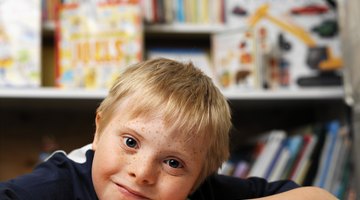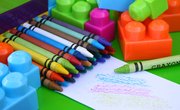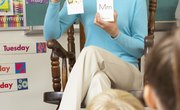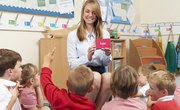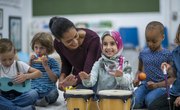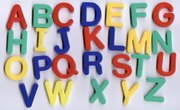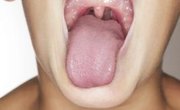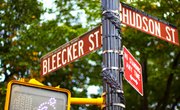Children with many different types of disabilities may have difficulty talking, including those with cerebral palsy, brain injuries, hearing impairments and cognitive disabilities. Children who can’t talk still need ways to communicate, of course. Some nonverbal children learn American Sign Language or some other system of signing. Others use augmentative communication devices. The type of device used depends on the specific needs and abilities of the individual child.
Object Symbols
Object symbols are small objects that represent specific things or activities. For instance, a tiny school bus may represent going to school or a small figurine of a dog may represent the family pet. Children select the object that represents what they want to communicate.
Photos or Drawings
Photos or drawings work much like object symbols but can be easier to assemble and carry around. The photos and drawings represent objects, actions, activities or feelings, and children select the image that represents what they want to communicate.
Communication Boards or Books
Communication boards or books are displays or books consisting of photos, drawings, symbols or words that children can use to communicate. Children point to the image that represents what they want to say. Some communication boards or books include many images, while others include only a few. Children usually point to the image that represents what they want to communicate. If children have trouble using their hands, though, parents, teachers or other adults can point to the images one by one and children can nod or otherwise indicate the image they wish to select. Easily portable boards and books usually work best; some people affix communication boards to wheelchairs so they are easily accessible to wheelchair users.
Alphabet Boards or Typing Devices
Alphabet boards resemble communication boards but have letters instead of pictures on them. Some have letters arranged in alphabetical order while others use a standard keyboard format. Children point to the letters to spell out words in order to communicate. Of course, alphabet boards only work for children who can spell well enough to communicate that way. Typing devices work like alphabet boards except they print out or display the letters children select. Children can even use an ordinary laptop as a typing device, though young children might do better with something sturdier than a laptop.
Speech Generating Devices
These electronic devices play recorded messages when children press buttons or switches. Some devices have only one or two buttons or switches, while others have more. Recorded messages may be as simple as “yes” and “no,” or they may be longer, like “hello, my name is Susan or “I need to use the bathroom.” Children usually activate these devices with their hands or fingers, but they can activate devices in other ways if they have difficulty using their hands.
Related Articles
References
Writer Bio
Kelly Morris has been making a living as a writer since 2004. She attended the College of Mount St. Joseph with a major in social work and minor in women's studies. Her work has appeared in a number of print publications including Caregivers Home Companion, Midwifery Today and Guide.

